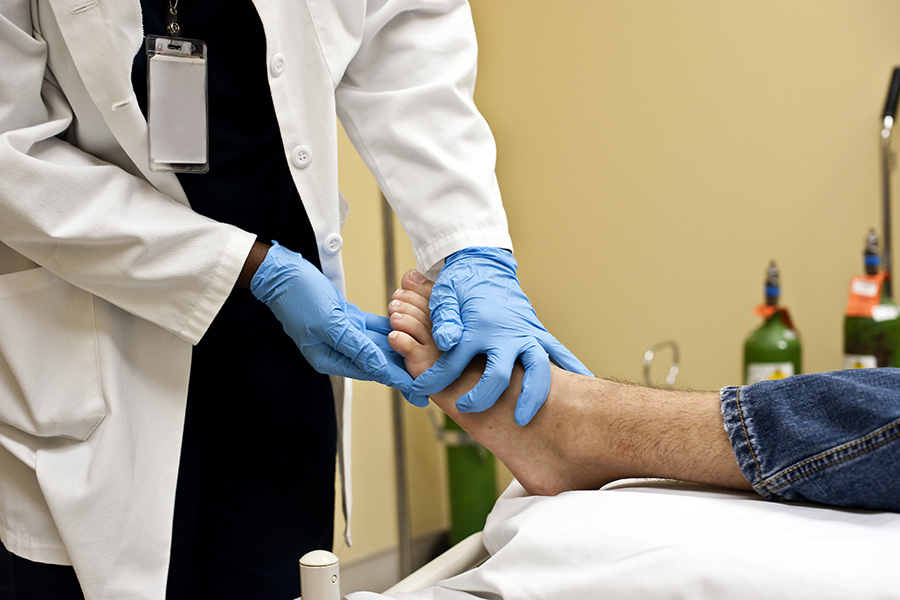Ulcers are a common complication of diabetes, affecting about 15% of 30.3 million Americans living with the disease. Of those affected by diabetic ulcers, 6% will be hospitalized for ulcer-related complications, and 14-24% of those hospitalized will require a lower extremity amputation.
A diabetic ulcer is a slow-healing wound. It’s important to know that, according to the American Diabetes Association, all diabetic ulcers are below the ankle. They can affect anyone living with diabetes. High-risk activities include: using insulin, and consuming alcohol and tobacco. Being overweight and having a diabetic-related disease (i.e. kidney, eye, heart) are also high-risk factors.
Causes
Although diabetic ulceration is not directly caused by diabetes, it can be the result of common diabetes side effects. Ulcers can stem from a variety of problems including high blood sugar, poor circulation, nerve damage, and a foot irritation or wound.
High Blood Sugar
High blood sugar, known as hyperglycemia, is a characteristic of diabetes. Insulin is the body’s tool for clearing excess sugar from the blood. In diabetes, however, the body is typically not producing enough insulin to process the excess sugar, so it remains circulating in the blood. Thus chronic high blood sugar can cause long-term complications, including nerve damage, retina damage, bone/joint problems and infection.
Poor Blood Flow
Vascular disease is a common complication of diabetes and can reduce the blood circulation to the lower extremities. Without proper blood flow, a wound on the foot can be slow healing, causing complications and making the wound more difficult to treat.
Nerve Damage
Neuropathy is nerve damage caused by chronic hyperglycemia (high blood sugar), affecting 60-70% of those living with diabetes. Nerve damage can prevent someone from feeling a wound on their foot, leading to a graduated infection.
Management
A foot deformity, injury or trauma can quickly evolve into an ulcer in conjunction with the above diabetes complications. In addition to managing blood sugar levels, taking special care and fully inspecting feet everyday can help prevent a foot ulcer. Look for wounds, redness, bruises, cracks, or any other abnormalities. This includes wearing comfortable and well-fitting shoes that will not tear or pull the skin.
Even minor wounds should be taken seriously, cared for, and brought to a physician’s attention immediately. If a foot wound is detected, appropriate wound care should quickly follow:
- Debridement — the removal of dying tissue or anything in or around the wound that will compromise healing. If the wound has a fluid build up, draining will also be necessary.
- After the wound is properly cleaned, an appropriate dressing can be applied. A dressing will promote healing by protecting the wound from contamination and wicking away excess fluid.
- Offloading — it is recommended to stay off the affected foot to promote healing. This can be achieved by using a wheelchair, crutches, steerable mobility scooter or cast to keep pressure off the affected area.
Diabetic foot ulcers are common but can be prevented by controlling blood sugar levels, regularly visiting a physician for screening, and doing daily thorough foot inspections.
If you’d like to learn more about diabetic ulcers, be sure to check out our recorded webinar Diabetic Ulcers: Identification and Treatment. You can also view the webinar through the Wound Care Education’s Institute’s website and receive a free Continuing Education Contact Hour Certificate by following the directions on the recorded webinar page.















How do I get help for Diabetes ulcers Do you have a number I can call